
Welcome to Part 2 of Creating Winter Interest in the Garden (if you missed Part 1, click here.)
I recently walked through a new client’s garden, where she kept apologizing for its appearance. She was afraid it was too early in the year for me to really get a clear picture of what it usually looks like.
I told her that winter is the perfect time for me to see what’s going on in her garden, without the distraction of flowers and foliage.
As I mentioned in Part 1, with so many plants dormant right now, it’s much easier for me to focus on the structure of the garden.

Today, however, I want to focus on other elements to include in your winter garden that will help it shine in the coldest, rainiest months.
Trust me – there are so many things you can do to up your ‘winter-game!’
1. Colorful Stems
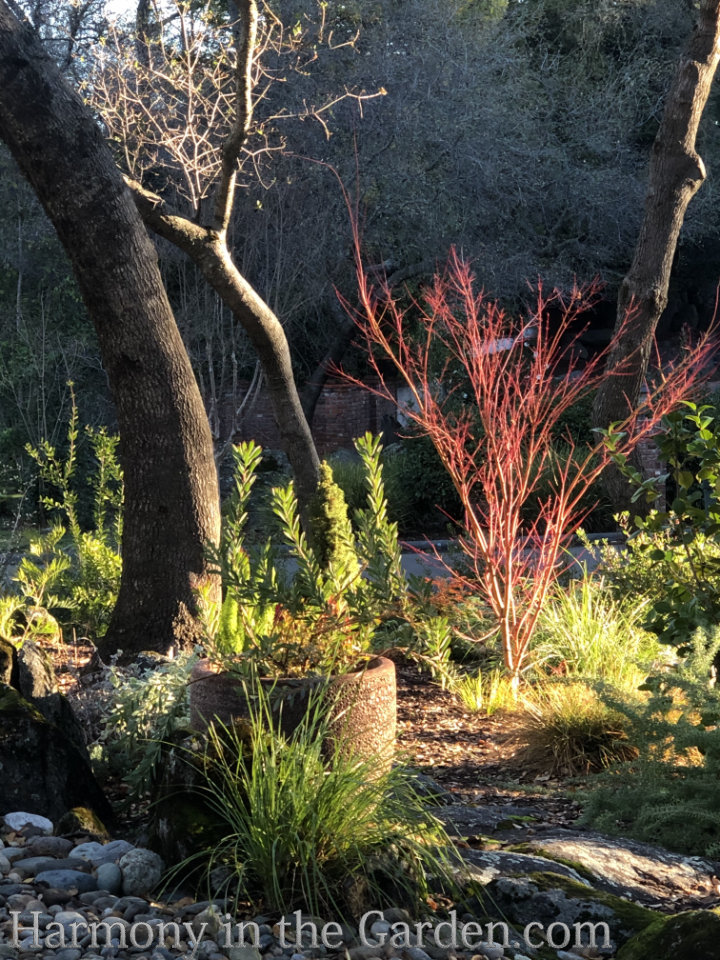
While it’s true that those who garden in colder climates have way more options in choosing deciduous shrubs whose stems turn brilliant shades of red, orange, and yellow.
But even if you garden in a mild climate like mine, not all is lost! There are plenty of plants with colorful stems to provide color in your winter garden.
For example, once colder temperatures arrive, the stems and bark of the Japanese Maple ‘Sango Kaku’ turn brilliant shades of red.
I’ve planted ‘Sango Kaku’ for years and have noticed that the more sun it receives, the brighter the colors.
Take a look at how mine glows when lit by the morning sun.
Or how it lights up the chilly, gray Seattle sky (below.)
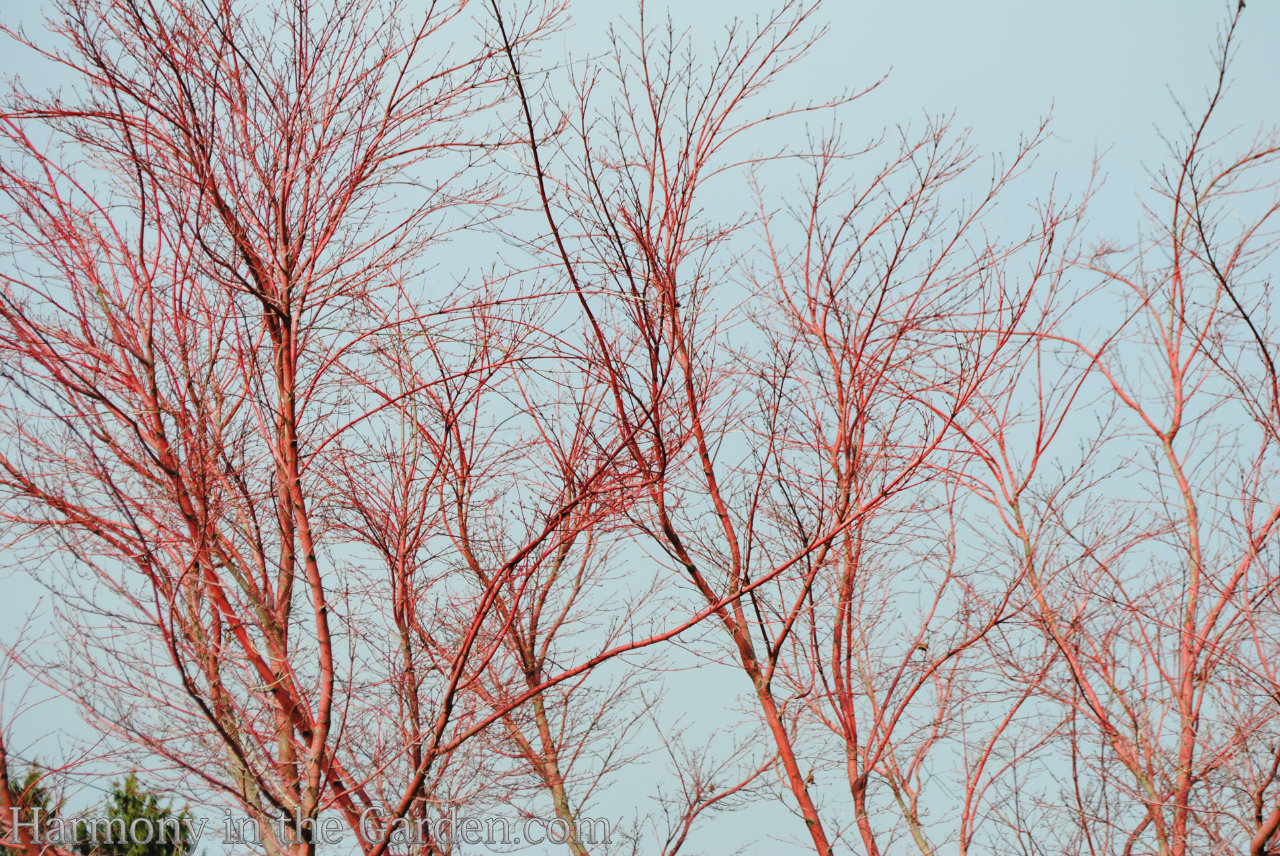
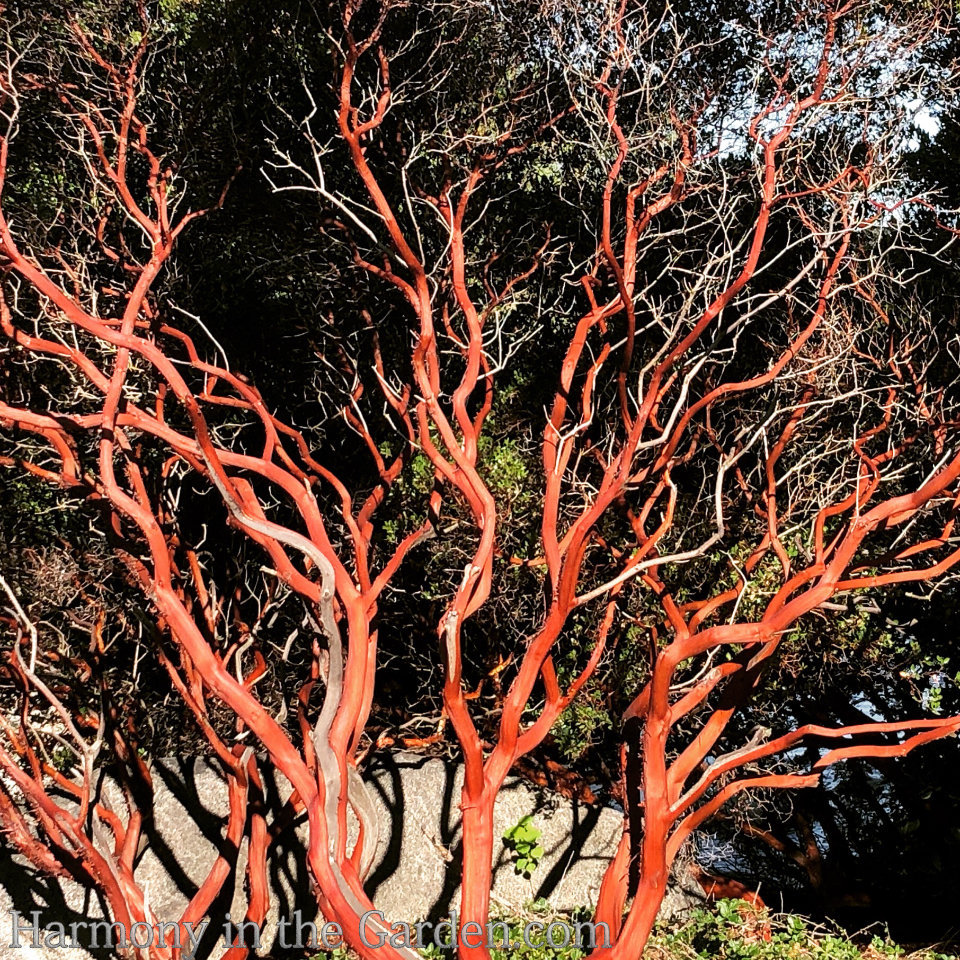
Many varieties of our native Manzanita will have smooth, red bark and stems.
Especially mature specimens, like this one in my neighborhood, placed in full sun.
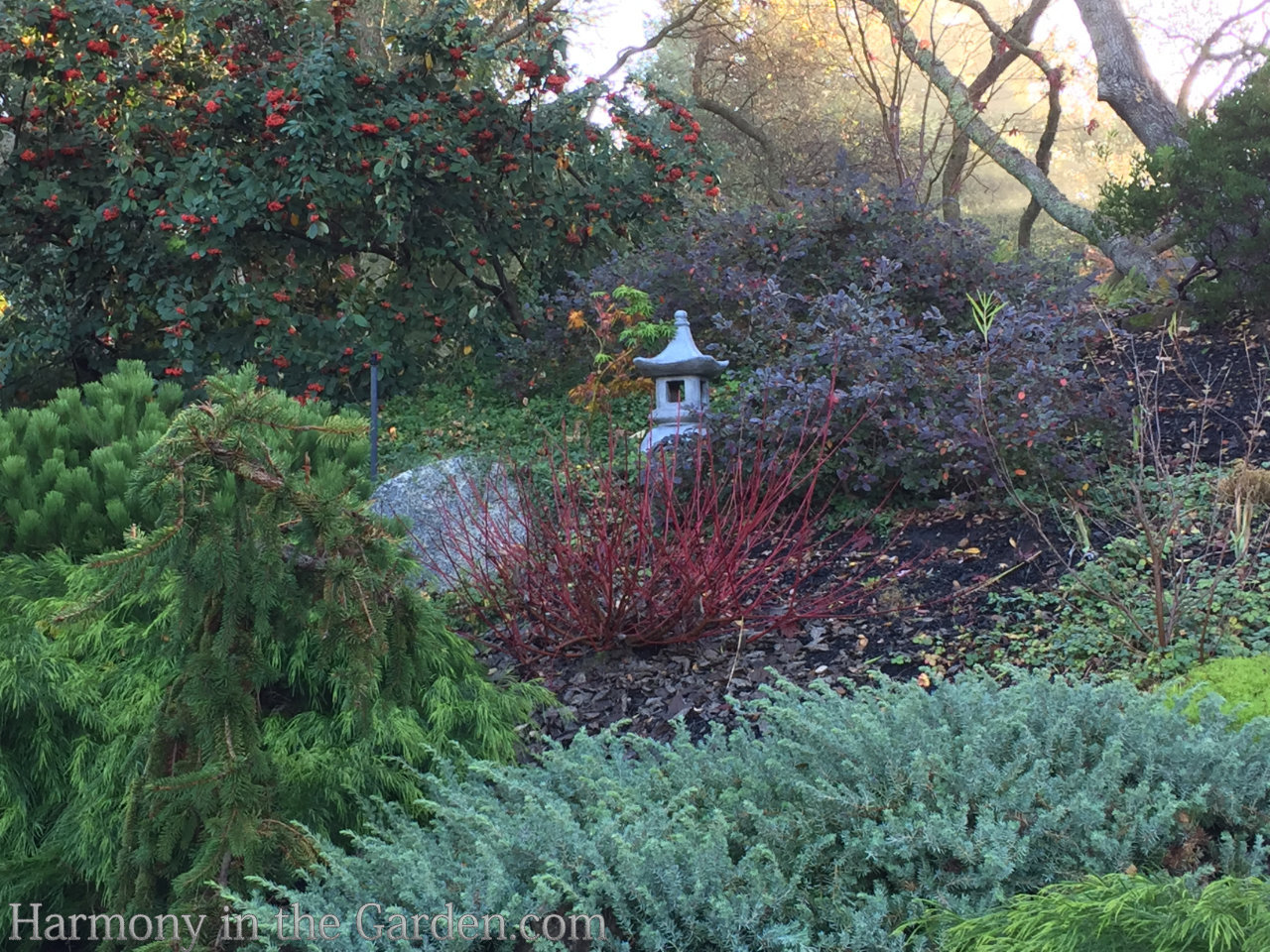
This Red Twig Dogwood lives in a garden near my home, so I know it does well in warmer climates.
I’ve watched their gardener cut the stems down low to the ground, which encourages the new growth that turns brilliant shades of red in winter.

Typically, most colorful dogwoods really want to live in colder climates.
The most incredible examples of colorful dogwood can be found in The Witt Winter Garden at the Washington Park Arboretum.
Like the brilliant yellow branches of this cornus ‘Flaviramea,’ with black mondo grass planted at its feet.
2. Textural Tree Bark

Texture is a vital element in the winter landscape, taking center stage when there is little else in the garden providing visual interest. This is especially true in cold climates with heavy snowfall. Tree bark is a crucial source of texture, providing drastic contrast (and visual relief) against the seemingly endless sea of snow.
Take a look at the peeling, cinnamon-colored bark of the Paperbark Maple (acer griseum.)
It’s truly a sight to behold in the garden, rivaling the attention of any nearby fall foliage.
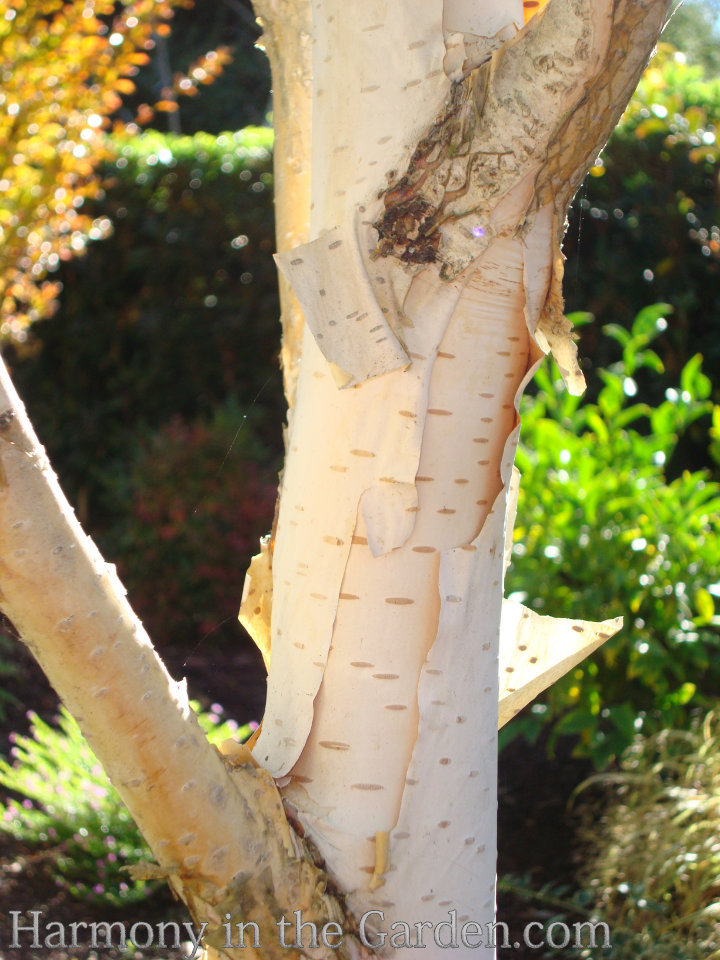


On a cold, clear winter day nothing beats the spectacular bright white bark of birch trees.
Or its white trunk backlit by evergreen shrubs.

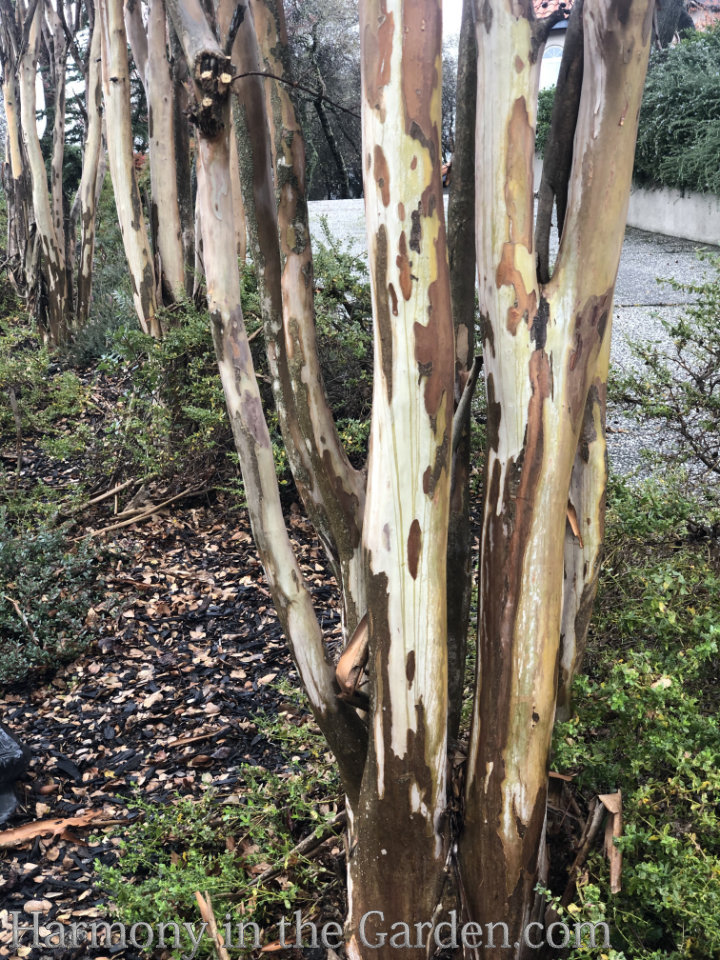
Give the common Crape Myrtle (lagerstroemia indica) a few years to mature, and you’ll be rewarded with a smooth patchwork of muted, earth-tone colors that appear in late winter.
3. Include subshrubs & hardy herbaceous plants for winter interest

What’s a subshrub? Fine Gardening Magazine has a great definition:
Subshrubs are an interesting botanical category since they possess traits of both woody and herbaceous plants. These plants develop a basal woody structure that produces herbaceous new growth during the growing season.
In winter, subshrubs often do not achieve a true dormant state. Instead, they are quiescent, or resting, which allows them to respond more quickly to warmer conditions than herbaceous or woody plants. (you can read more here.)

As mentioned, subshrubs die back to a low mound of foliage, not unlike hunkering down into a tight ball for the winter.
These herbaceous mounds not only provide a bit of color in the winter months but can look downright stunning when lightly dusted with frost.
Subshrub examples include nepeta (catmint), hardy/cranesbill geraniums, phlomis russeliana (Jerusalem Sage), and lavenders.
And hardy herbaceous plants, like the fern (left), can be transformed into sculptural art, thanks to the morning frost.
4. Cold Color – thanks to frosty temps

Don’t forget about the brilliant shades of red and orange that can result from colder temperatures.
A classic example is this sterile variety, ‘Fire Power’. It’s important to note that most nandinas are highly invasive so please make sure to choose varieties that don’t produce berries and are proven to be sterile.
This nandina is planted in my front garden and glows during the cold winter months, stopping passersby in their tracks.
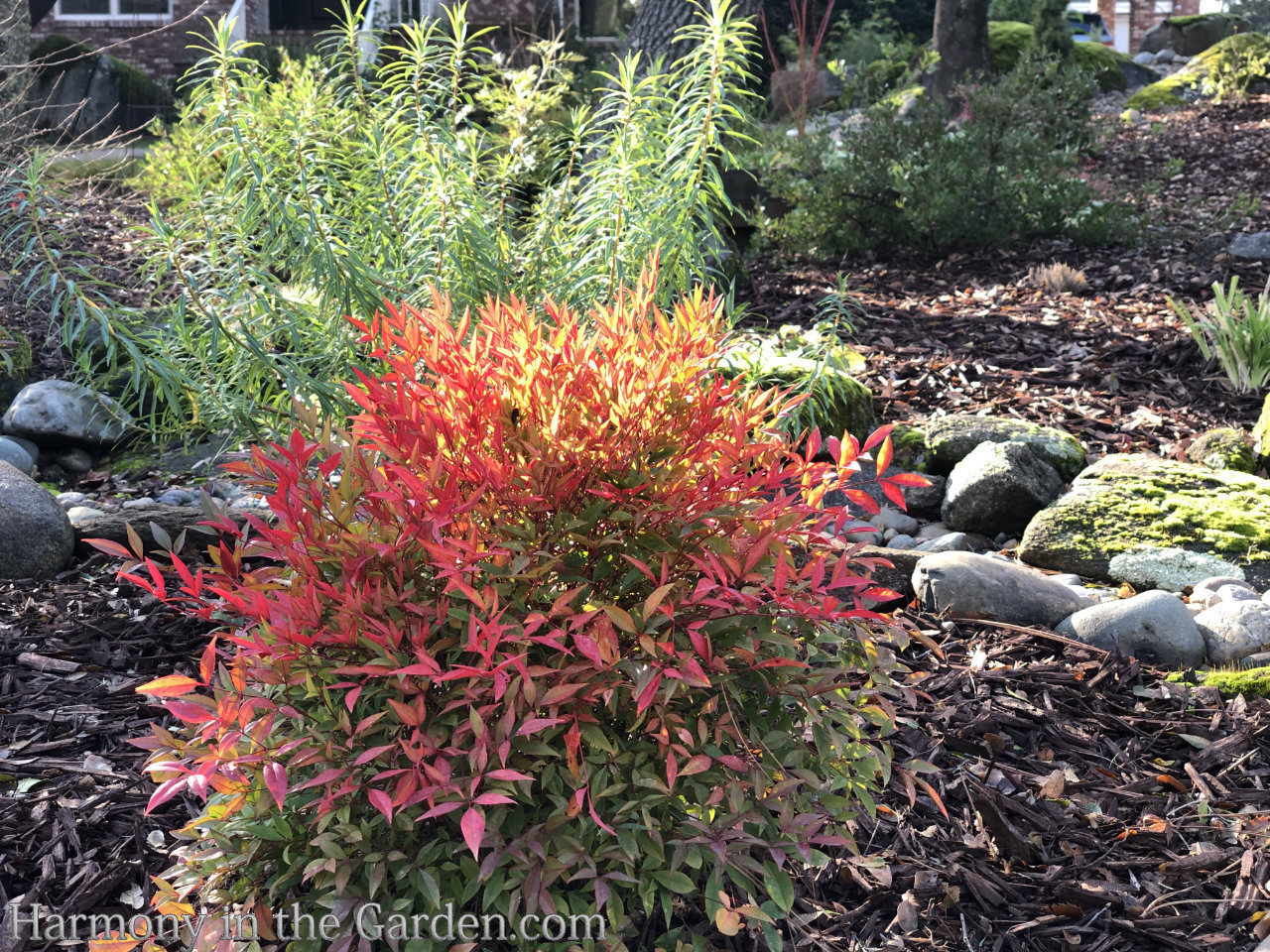
My ‘Obsession’ nandina, a newer variety (also sterile) is bound and determined to steal the spotlight from my ‘Fire Power’.

I discovered this Japanese Cedar (Cryptomeria japonica ‘Elegans Compacta’ zones 6-9) for the first time in Seattle and instantly fell in love with the coppery-mauve winter tones it develops.
This is a dwarf variety, slowly growing to 10’, making it ideal for smaller gardens.
Oh, how I wish I could plant this in my garden, but alas, I’m afraid it would HATE hot and dry summer temps!
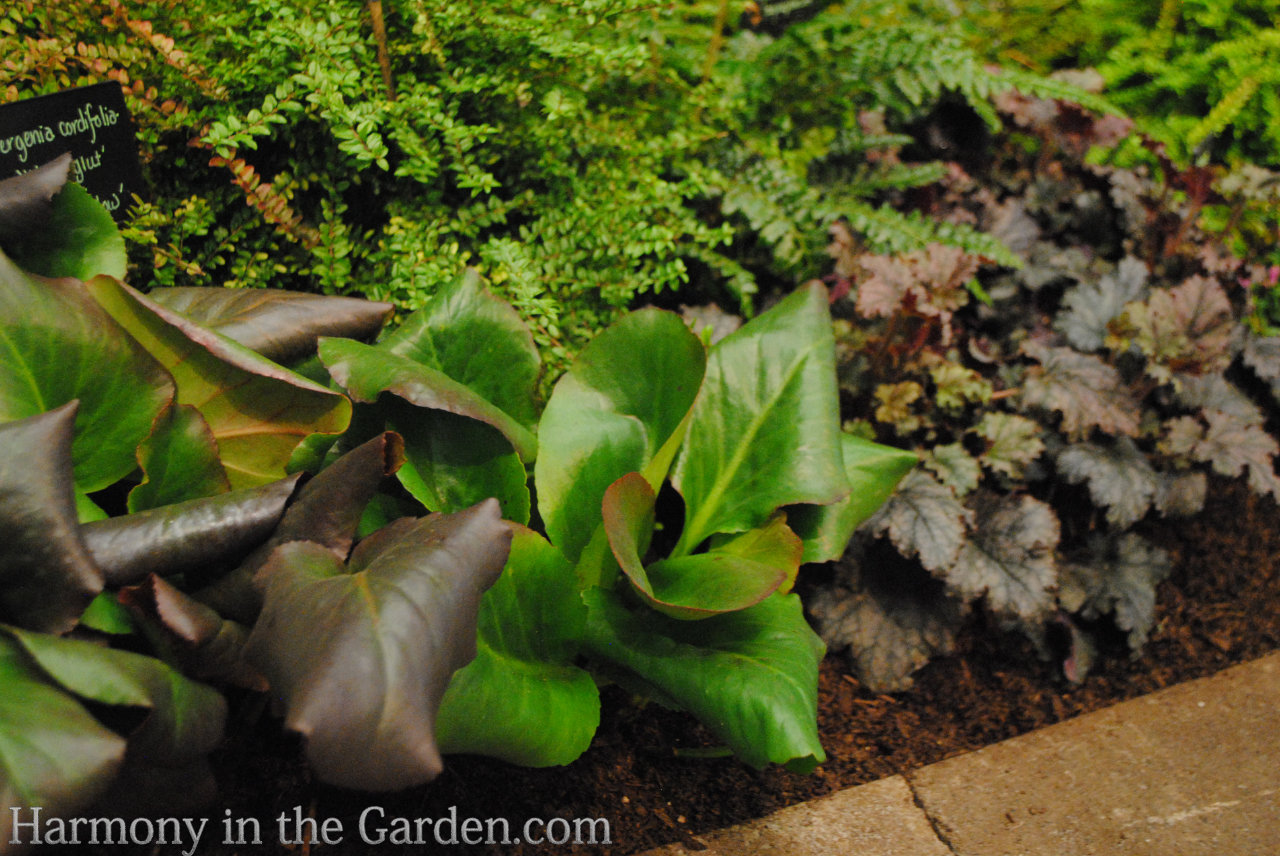
Whenever possible, I like to plant the ‘Winterglut’ variety of bergenia.
It not only has the trademark pink/magenta flowers (which are just now starting to emerge in my garden) but has stunning burgundy foliage in the winter.
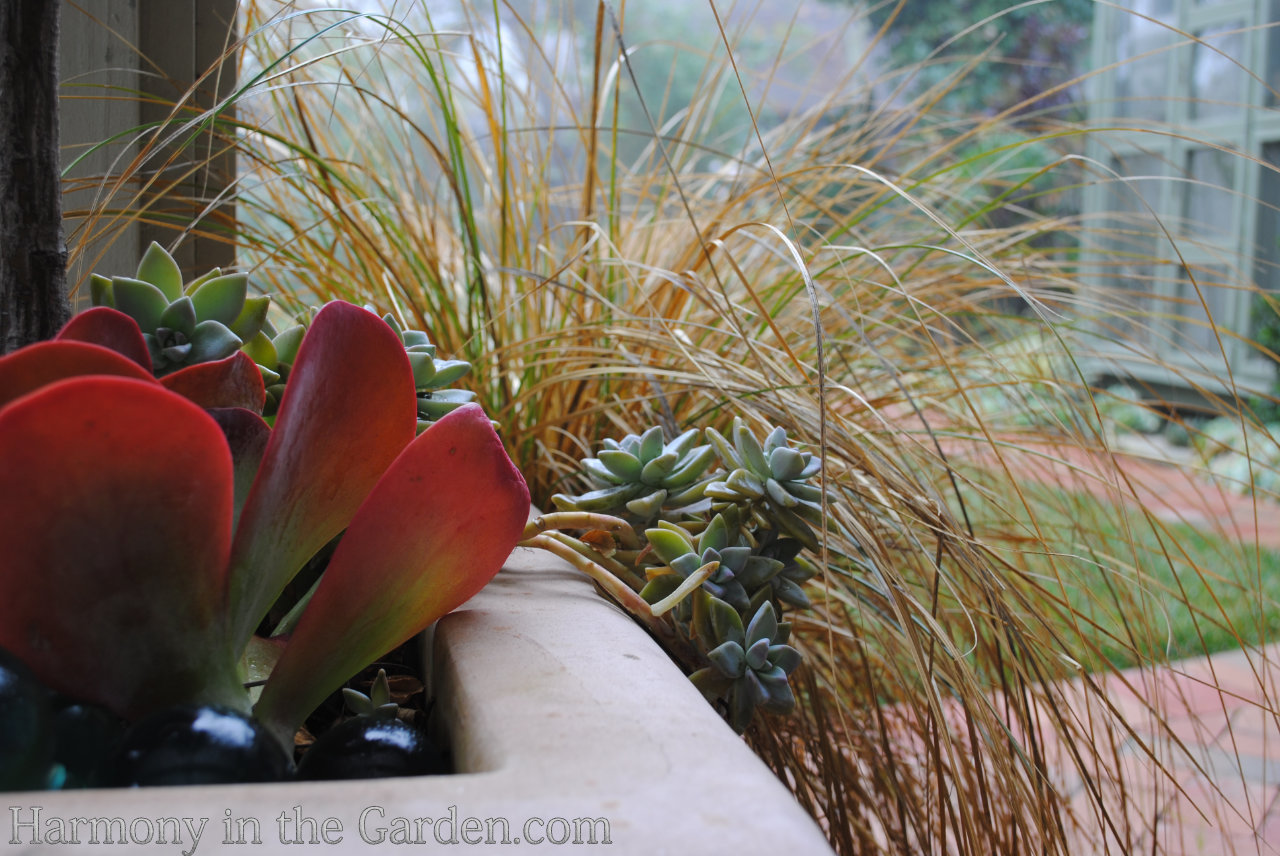
Of course, I have to mention succulents and the brilliant shades they’ll show when stressed by winter’s cold temps.
The Flapjack succulent (kalanchoe luciae, left) glows in my winter garden. Even though this is a tender succulent, there’s many hardy succulents for those of you who live in colder climates (some even down to zone 3!)
I highly recommend reading ‘Hardy Succulents’ by Gwen Moore Kelaidis and Saxon Holt. It’s one of the best resources for succulents that will withstand snow and freezing temps.
5. Winter Scent
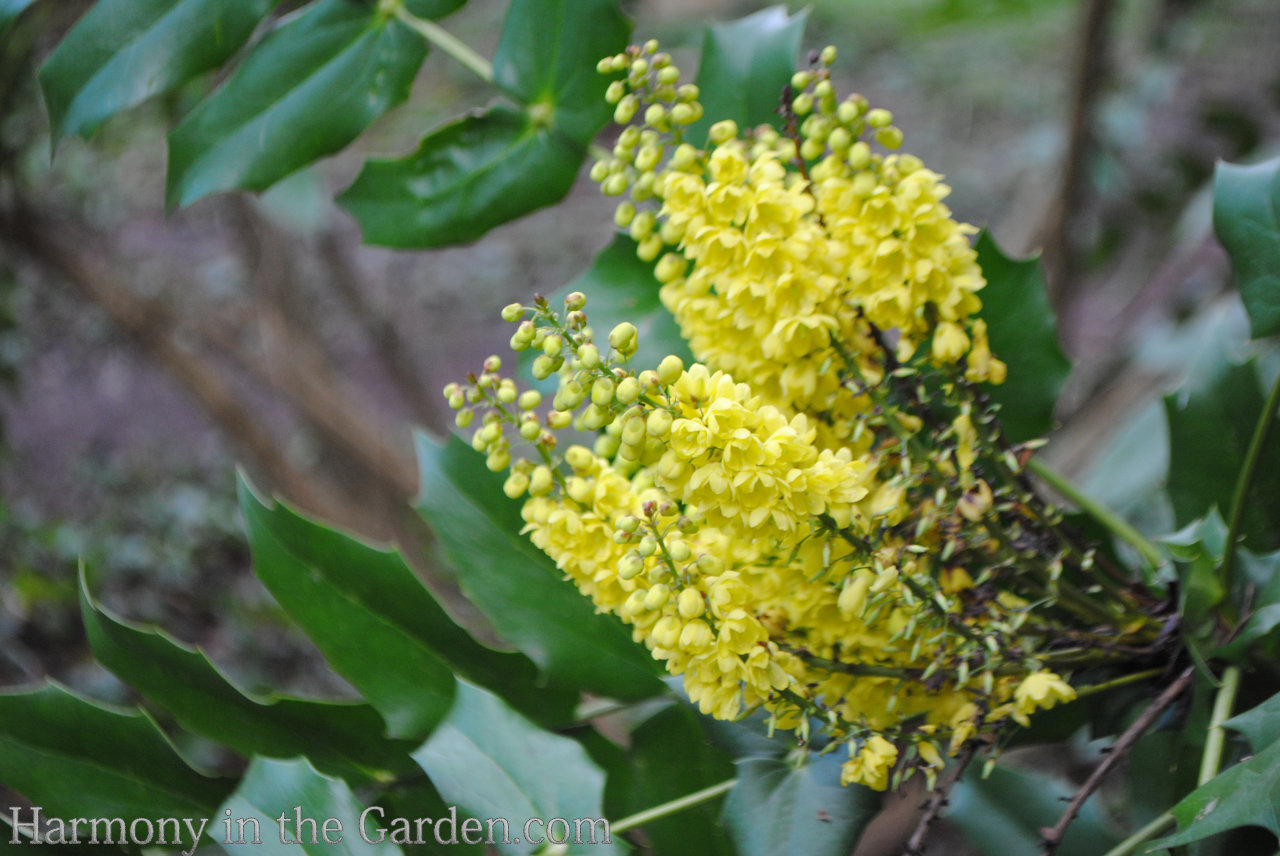
I’ve written about plants with winter fragrance before (click here to read more), but I wanted to include a few more that I’m adding to my new garden.
Such as this mahonia ‘Arthur Menzies’ (zones 7-9) with its giant yellow flowers and heavenly winter scent.

As an added bonus, it has clusters of vibrant blue berries in the summer.
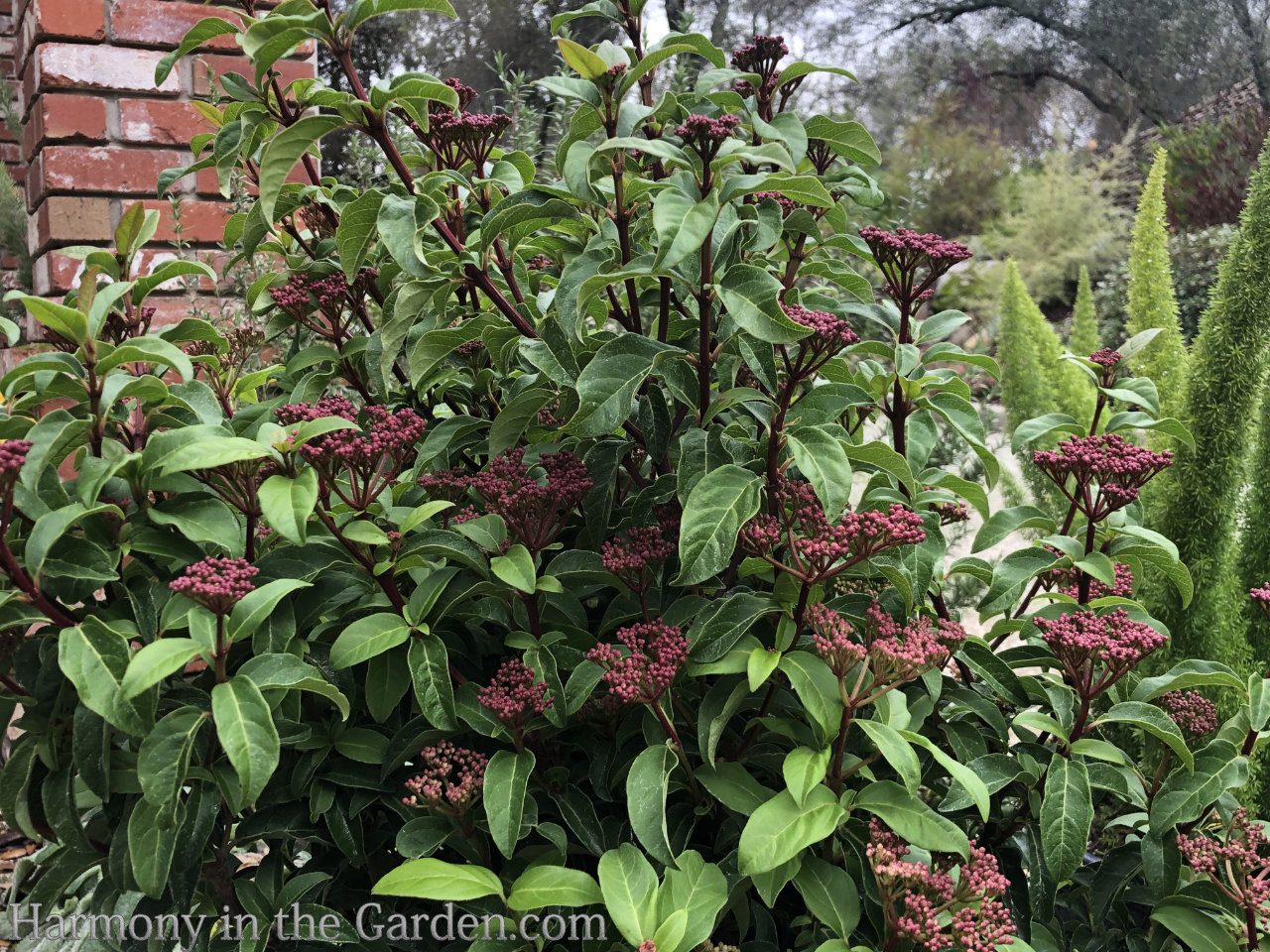
This photo of my Viburnum ‘Spring Bouquet’ (zones 8-10) shows just how many buds are about to explode!
Give it another few weeks, and there will be hundreds of lightly scented, little white flowers.

Fragrant Witch Hazels zones 5-8
Can you imagine having these towering, fragrant witch hazels in your garden right now?
Nothing beats them for profuse winter flowers and delicious scent (some mores o than others – click here for a great article that ranks their scent!)
While most witch hazels prefer living in colder climates, ‘Diane’ is a variety that is ‘supposed’ to do well in warmer zone 9 gardens. I’ve just ordered one for myself, and I’ll keep you posted with the results!
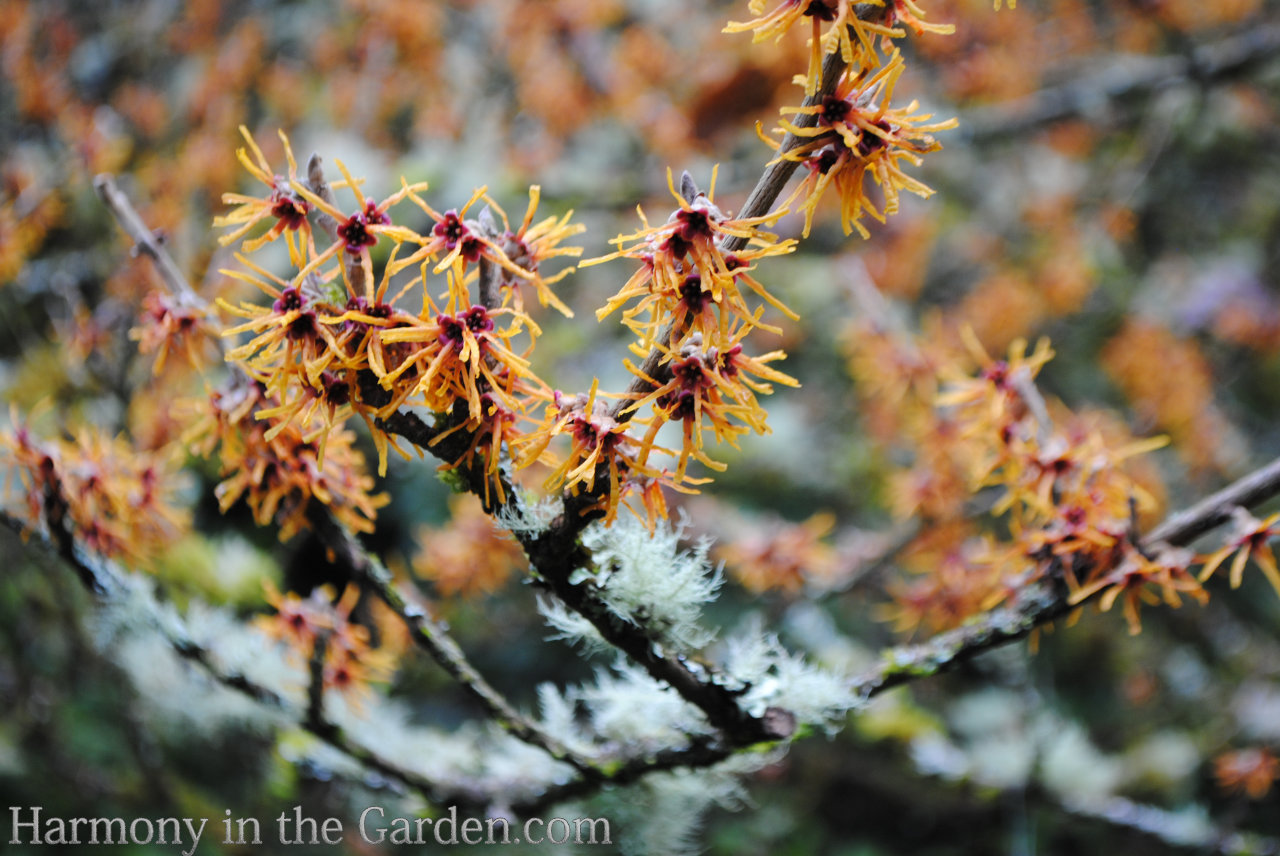

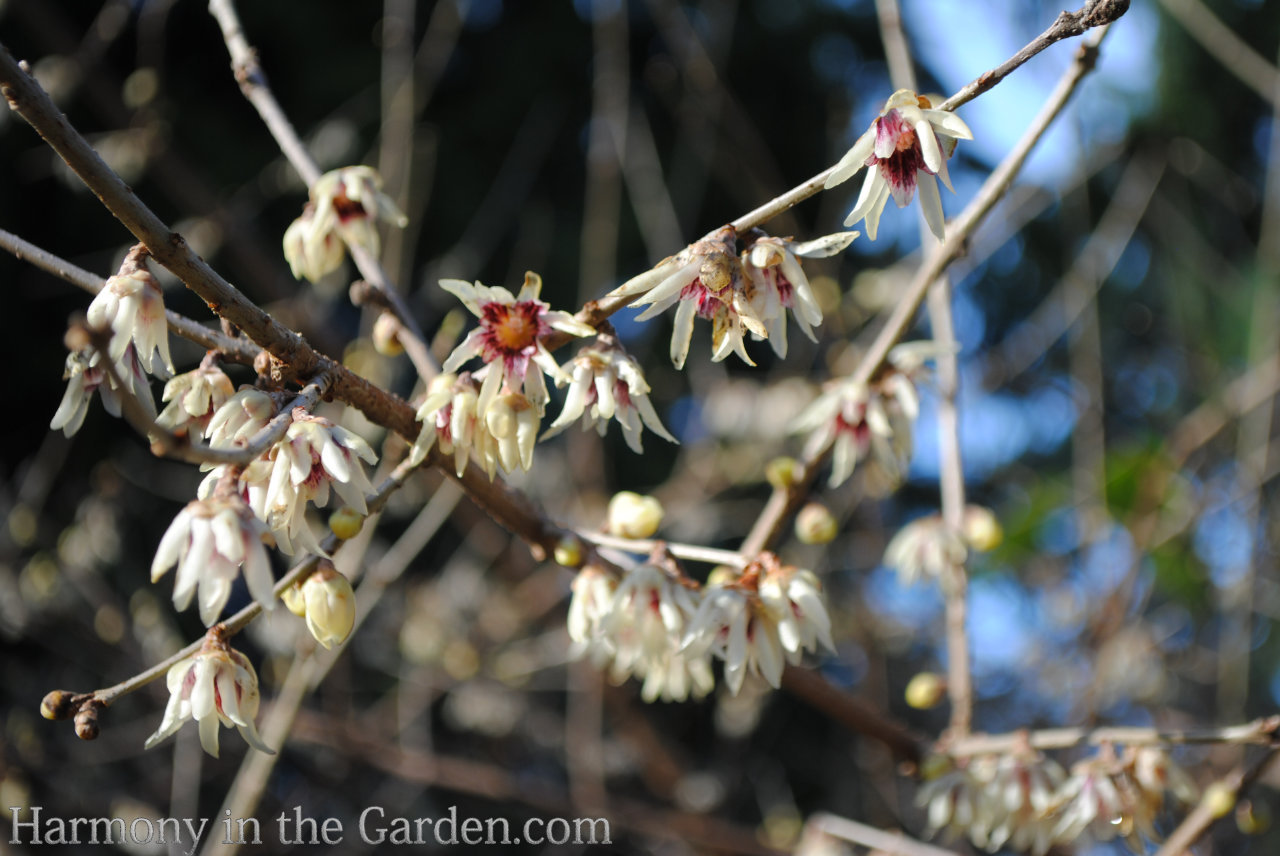
Wintersweet (Chimonanthus praecox) Zones 6-9
Wintersweet is similar to witch hazels in that the flowers bloom on bare stems. It’s a large variety, growing 10-15′ x 8-12″ wide, so make sure to give it plenty of room.
But if you’re lucky enough to have space, you’ll be rewarded with fragrance that’ll make you swoon.
6. Bountiful Berries
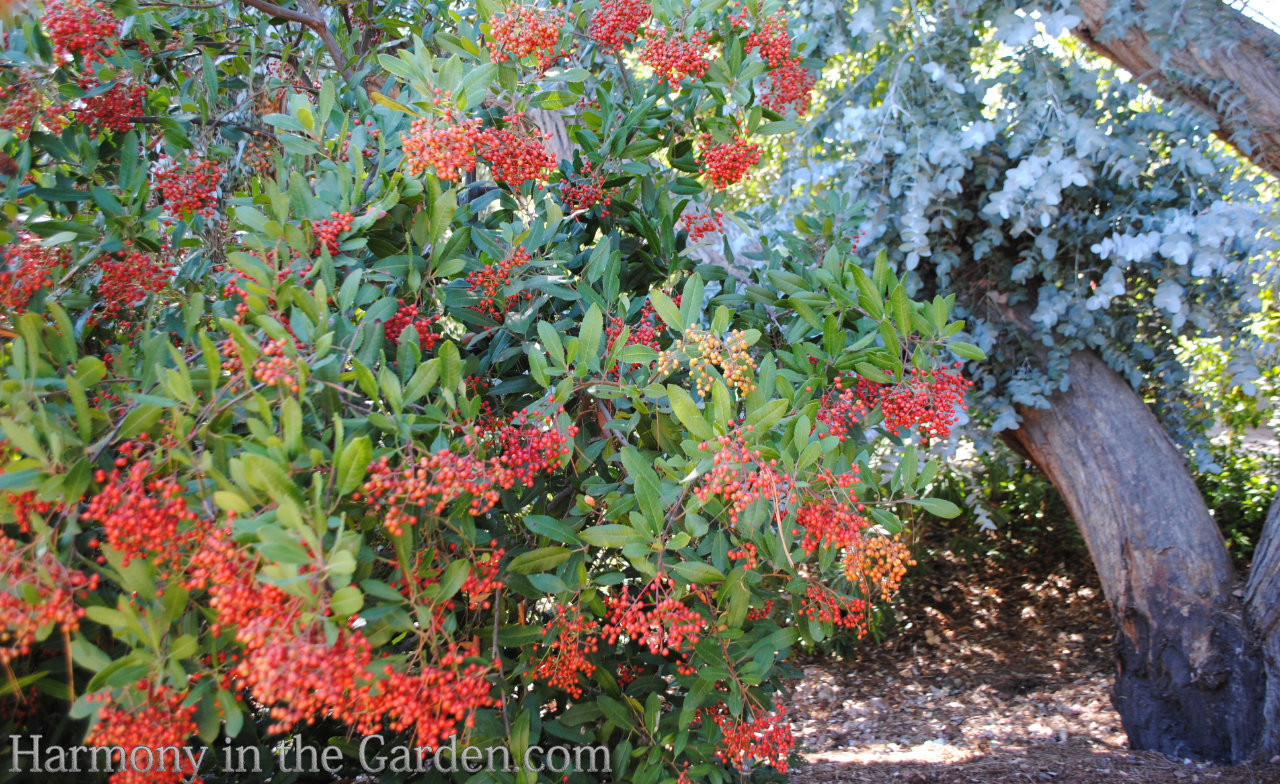
Winter berries are also something I’ve written about before (click here.)
However, there are some new plants that I wanted to add to the ones I previously mentioned.
Like our native Toyon berries (left), it’s important to remember that the berries aren’t just for our viewing pleasure!
They’re also a critical source of food for hungry wildlife. All the more reason to add them to your garden!


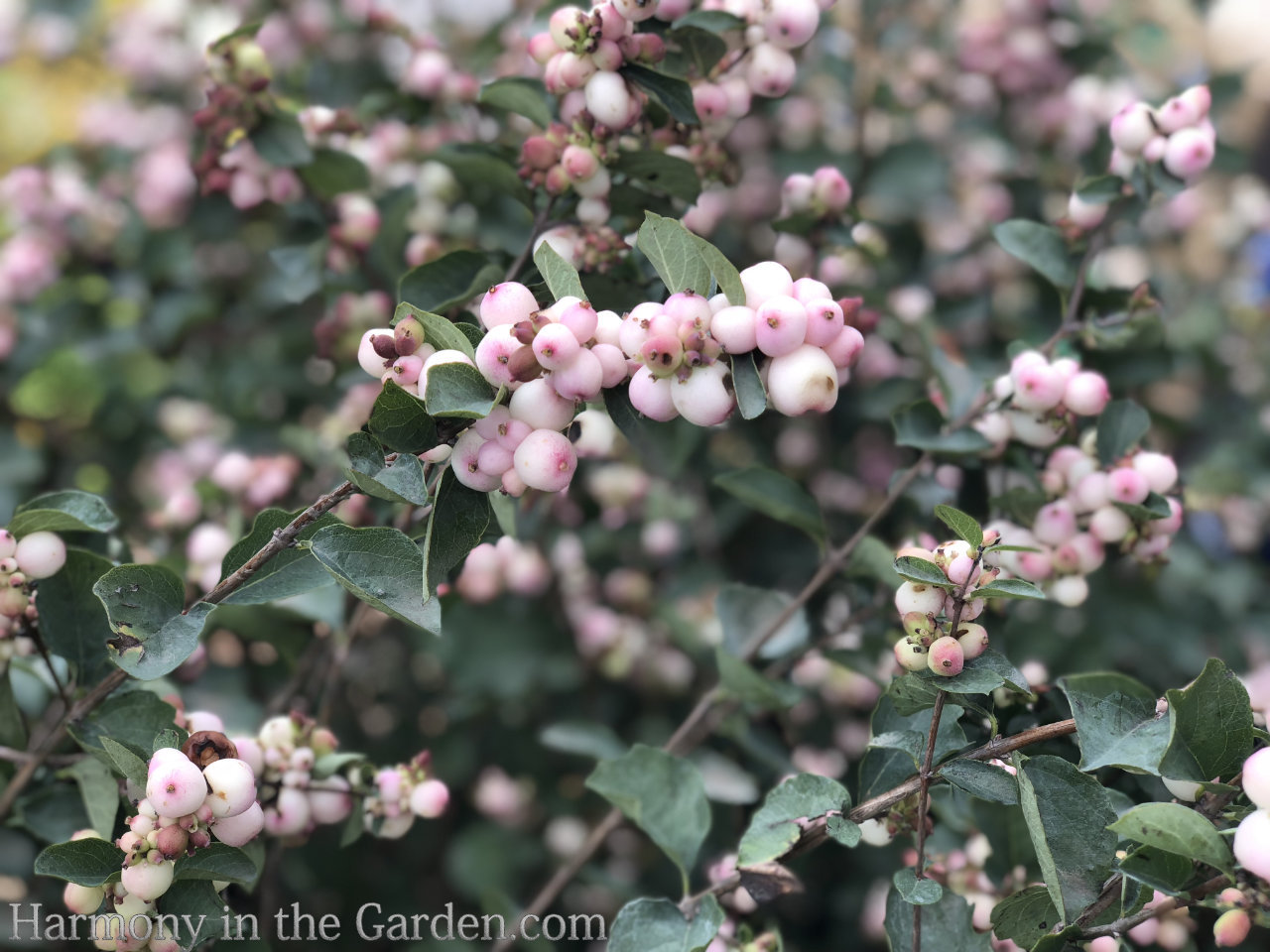
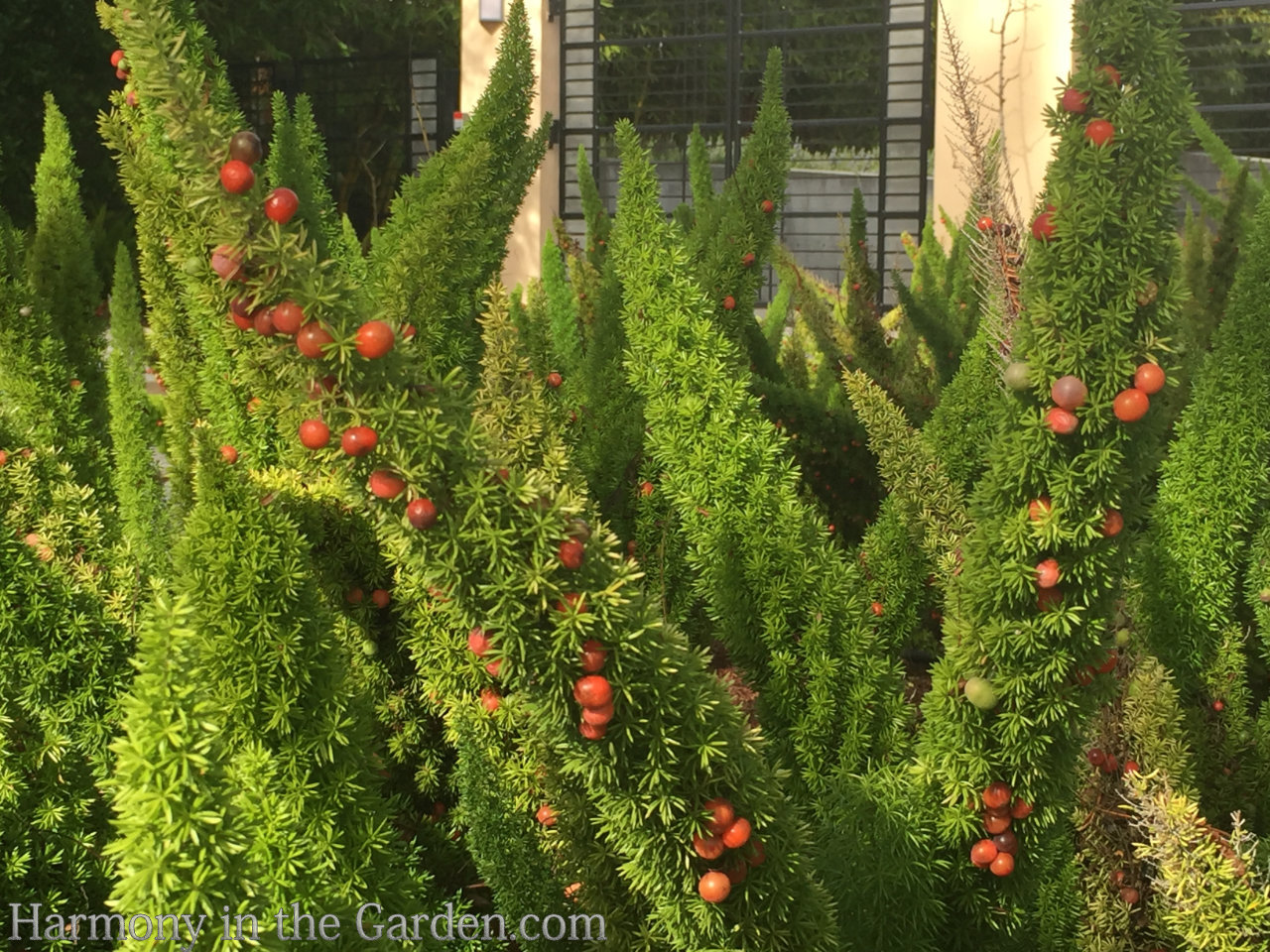
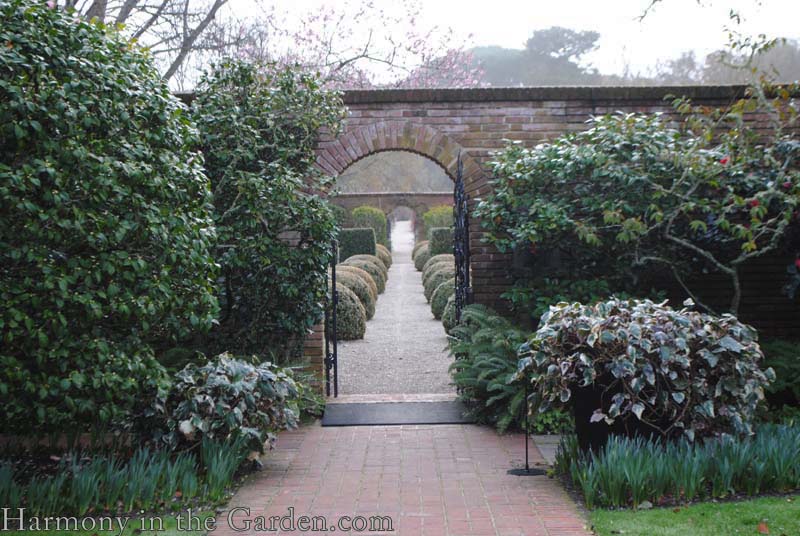
And finally, to wrap up my suggestions on adding winter interest to your garden, I would suggest heading out to visit any botanic or public gardens that are open right now.
Take note of what’s blooming, where the structure is coming from, colorful foliage or berries.
If you live near Filoli, I highly recommend seeing it in the quiet months (click here for my winter visit.)
Or Seattle’s Kubota Garden (click here) or San Francisco’s Japanese Tea Garden (click here to read about my recent visit.)
Of course this is only a partial list of plants that add winter interest. What are some of your favorites? Please share!





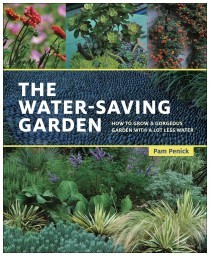
6 Comments
All my favorite garden elements right here, lovely deep greens, grasses and all the coloured stems. Textural dream!
Thank you! I can see you’re a ‘winter garden fan’ like I am – it’s such a beautiful, serene time of year, isn’t it?
Thank you Rebecca for yet another entertaining and informative blog, You have really broadened my awareness and appreciation of plants and how beautiful they can be year around 🙂
Thank you, Melissa, I’m so glad you’re enjoying my blog!
Hi Rebecca, I love reading your articles while sipping coffee on Saturday mornings. Thanks for another inspiring one! One plant to consider for colorful winter foliage is a blueberry shrub & one small deciduous tree for dark red berries enjoyed by birds is a crabapple. Best, Marianne
Thanks so much, Marianne, I really appreciate the kind words! And your suggestions are fantastic. My mother has the most incredible ‘Adam’ crabapple with TONS of fruit on it, just waiting for hungry birds. Stay warm!